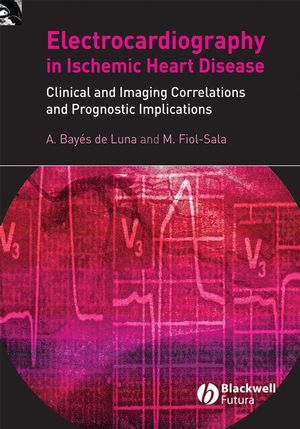Electrocardiography in Ischemic Heart Disease: Clinical and Imaging Correlations and Prognostic ImplicationsISBN: 978-1-4051-7362-9
Hardcover
344 pages
January 2008, Wiley-Blackwell
 |
||||||
The book is structured in two sections. Part One covers electrocardiographic patterns of ischemia, injury and infarction.
• Each chapter discusses a different ECG abnormality in
turn, clearly explaining the ischemic insults and
electrophysiological mechanisms underlying each pattern to promote
rapid and accurate interpretation of the ECG in the clinical
setting.
• ECG abnormalities are correlated with myocardial anatomy
and coronary angiography to produce a series of practical
diagnostic algorithms that allow the clinician to identify not only
the occluded artery but the precise location of the occlusion
within the artery, facilitating appropriate therapeutic
decisions.
• The authors also propose a new classification of Q-wave
myocardial infarctions based on imaging correlations with advanced
techniques such as contrast-enhanced cardiac magnetic
resonance.
Part Two of the book covers the ECG in clinical practice. Each
chapter focuses on a different clinical syndrome, describing the
role of the ECG in a global approach to the diagnosis, prognosis
and risk stratification of patients with acute and chronic ischemic
heart disease and guiding clinical decision-making.
Extensively referenced and illustrated throughout, this book is highly recommended for any clinician involved in the diagnosis and management of ischemic heart disease.



